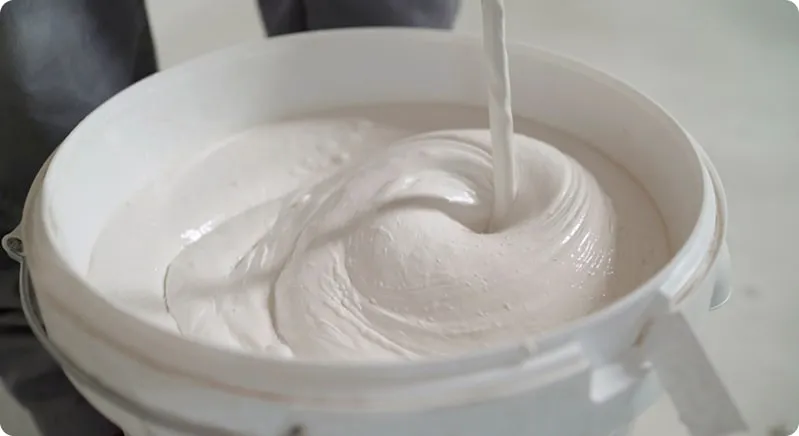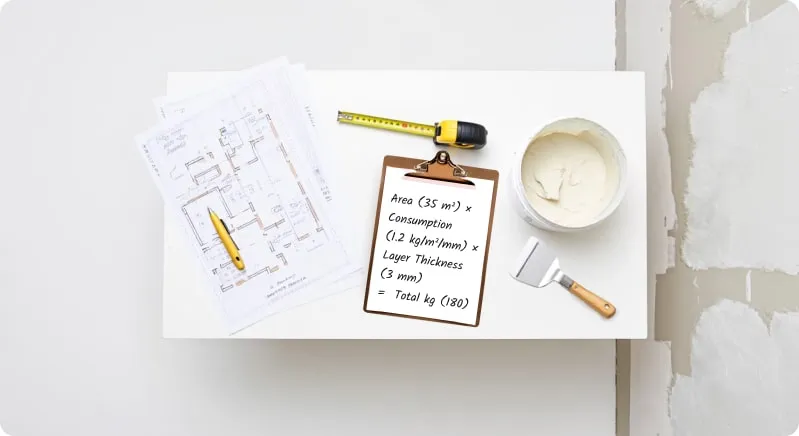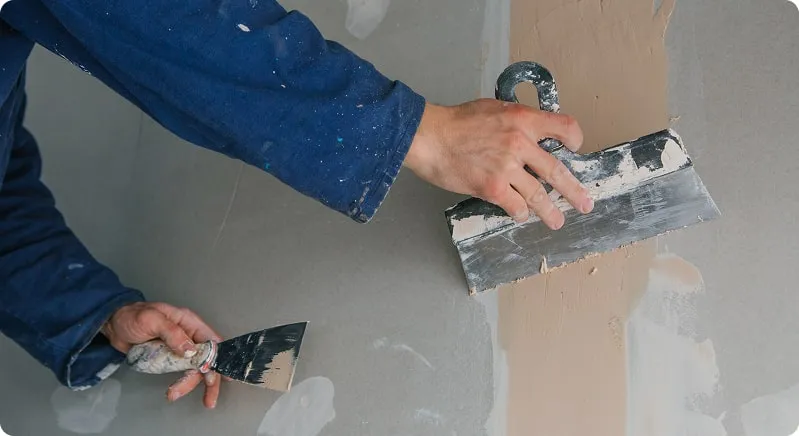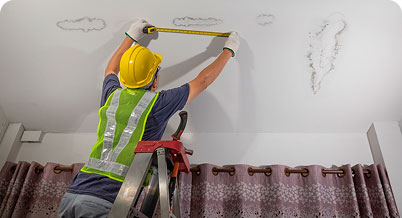How the quality of surface preparation affects the consumption of putties
GF Leads, 05 August, 2025
At GFLeads, we not only understand the intricacies of repair work, but also help craftsmen find customers across the United States. Before going into details about putties, let's tell you how we can be useful:
- For Publishers: Earn money by recommending our services through articles in blogs, forums or magazines
- For craftsmen: Get leads at a fixed price in your state
- For everyone: Participate in the affiliate program by recommending clients through special landing pages.
Now to the main topic - how to save on putty due to proper surface preparation.
Why is surface preparation important?
As in our business, where every detail is important (proper landing, accurate selection of craftsmen), in repairs, surface preparation determines the success of the entire work.
How does preparation affect consumption?
1. Flatness of the surface
Just as we carefully select leads for each craftsman, the surface must be prepared carefully - the smoother the wall, the less putty will be required.
2. Porosity of the substrate
Our customers in different states have different needs - as do surfaces: porous materials require more mixing.
3. Type of foundation
We work with different areas (plumbing, roofing), and each has its own solutions. It's the same with putties: each base has its own type.
Types of putties

Classification of putties by type
Depending on the chemical composition, putties are divided into the following types:
- Cement fillers. These materials are characterized by high strength and water resistance. They are ideal for use in rooms with high humidity (for example, in bathrooms or on balconies). The disadvantage of cement fillers is their tendency to shrink, which may require the application of several layers. The consumption of cement putty is often higher than that of gypsum or polymer analogues, especially on uneven surfaces.
- Gypsum fillers. They are characterized by plasticity and ease of use. Gypsum putties have good adhesion to most surfaces and are not prone to shrinkage. Their main disadvantage is their low water resistance, which limits their use in damp rooms. These materials have a low consumption due to the thin application layer and high opacity properties.
- Polymer fillers. Polymer materials combine the advantages of both cement and gypsum fillers. They have high elasticity, crack resistance and durability. Polymer fillers can be used for both basic and finishing leveling. The consumption of polymer fillers is often lower due to their ability to spread evenly over the surface.
Calculation of the expense

Calculate the putty consumption as carefully as we calculate the cost of leads in each state.:
- Measure the area (how we analyze the market)
- Consider the thickness of the layer (as we take into account the specifics of each order)
- Take into account the surface features (how we select the craftsmen for the task)
Example: For 50 m2 with a layer of 3 mm: 50 × 1.2 kg × 3 = 180 kg
Tips for surface preparation from GFLeads
To minimize putty consumption and achieve an ideal result, follow these recommendations.:
- Clearing. Remove dust, dirt, old paint and other contaminants. At GFLeads, we always start with a clean slate, and we advise you to do the same.
- The primer. Apply a primer that matches the type of substrate. As we select leads for a specific request, the primer "prepares" the surface for the filler.
- Alignment. Seal up the large bumps and cracks. It's like adjusting a landing page: we make it as effective as possible in order to attract more customers.
Grinding. After the putty dries, sand the surface thoroughly. Pay special attention to the joints and transitions to achieve a perfectly smooth foundation. Just as we polish our advertising campaigns to a high gloss, sanding ensures a flawless final result.
Re-priming. After sanding, it is recommended to apply another coat of primer. This will improve the adhesion between the putty and the finish coat, whether it's paint or wallpaper. This is like an additional check in our lead generation system: we make sure that each lead meets the requirements of the master.
Quality control. Before painting or wallpapering, carefully inspect the surface for defects. Minor scratches or irregularities can be fixed with a small amount of putty. At GFLeads, we constantly monitor the quality of leads so that our partners receive only targeted requests.
Final coverage. Choose high-quality materials for finishing. Good paint or wallpaper will accentuate a perfectly prepared surface and give your interior a finished look. Just as we provide craftsmen with only "warm" leads, ready to cooperate, high - quality finishes transform the space.
Cost optimization: a small life hack from GFLeads

As we are constantly optimizing our lead generation system, there are also some tricks in working with putty. Try using a putty with a finer - grained structure for finishing leveling. This will reduce the thickness of the layer and reduce material consumption, as we reduce the cost of the lead for the master.
Saving on materials should not be at the expense of quality. At GFLeads, we adhere to this principle: we offer affordable prices without sacrificing the quality of leads. Proper surface preparation is an investment in durability and aesthetics, just as cooperation with GFLeads is an investment in the development of your business.
Conclusion
Proper preparation saves materials, just as our system saves you time searching for clients.
GFLeads offers:
- An affiliate program for publishers
- Ready - made leads for the masters
- Fixed prices in each state
We work only in the USA. Connect to our system and optimize your business in the same way you optimize your material consumption!
Table of content
- Why is surface preparation important?
- How does preparation affect consumption?
- Types of putties
- Conclusion


